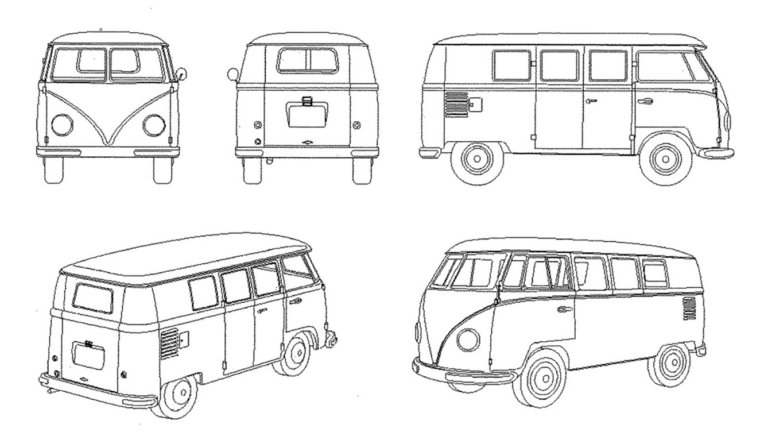Volkswagen “Bulli” van is a valid three-dimensional trademark according to the EUIPO
By application filed on May 2, 2017, Volkswagen applied to the EUIPO for the registration of the three-dimensional trademark No. 016675721, reproducing the well-known van commonly referred to as “Bulli”, for classes 12, 28, 35, 37 and 39 of goods and services.
In a decision dated October 30, 2020, the EUIPO rejected the application for registration pursuant to art. 7 (1) of the EU Regulation (RMUE), deeming the shape of the Bulli to be devoid of distinctive character for vehicles.
Volkswagen then appealed against this decision, an appeal which was upheld, with the annulment of the contested decision, by the First Board of Appeal, in a decision of 29 November 2021 (R 2421/2020-1). In that decision, the First Board of Appeal recalled that, with regard to the assessment of the distinctive character of a three-dimensional mark:
(i) the assessment criteria to be applied to shape marks are no different from or more restrictive than those applicable to other types of marks. However, in practice it may be more difficult to prove the distinctiveness of a shape mark because the public is not used to inferring the origin of a product from a simple shape in the absence of any verbal or graphic element;
(ii) the more closely the shape for which registration is sought resembles the shape most likely to be taken by the product for which registration is sought, the more likely it is that the shape is devoid of distinctiveness within the meaning of Article 7 (1) (b) CTMIR
(iii) where a shape mark consists of the shape of the goods for which registration is sought, only a mark consisting of a shape which departs significantly from the norm or customs of the sector, and thus fulfils its essential function as an indication of origin, is not devoid of the distinctive character required for registration. It must always be determined whether this form enables the average consumer of the goods in question to distinguish them from those of other companies.
In the present case, the EUIPO found that:
– The V shape on the front of the van, which also resembles the head of an insect, is positioned where the public would normally expect to find a radiator grille. Therefore this shape, perceived as a distinctive feature of the Bulli, would allow the relevant public to distinguish between models of different manufacturers on the market, even without the addition of the VW logo;
– The other characteristic features such as the rounded shape of the van, the division of the windscreen into two parts and the round headlights are also so unusual on the car market, that the target public would be able to recognise an indication of origin in the shape of the vehicle;
– the shape of the Bulli was not common for vans on the market, not only at the time of filing, but also in the 1950s when the Bulli was first placed on the market.
In conclusion, Volkswagen’s application was therefore remanded to the Examination Division for further proceeding.

